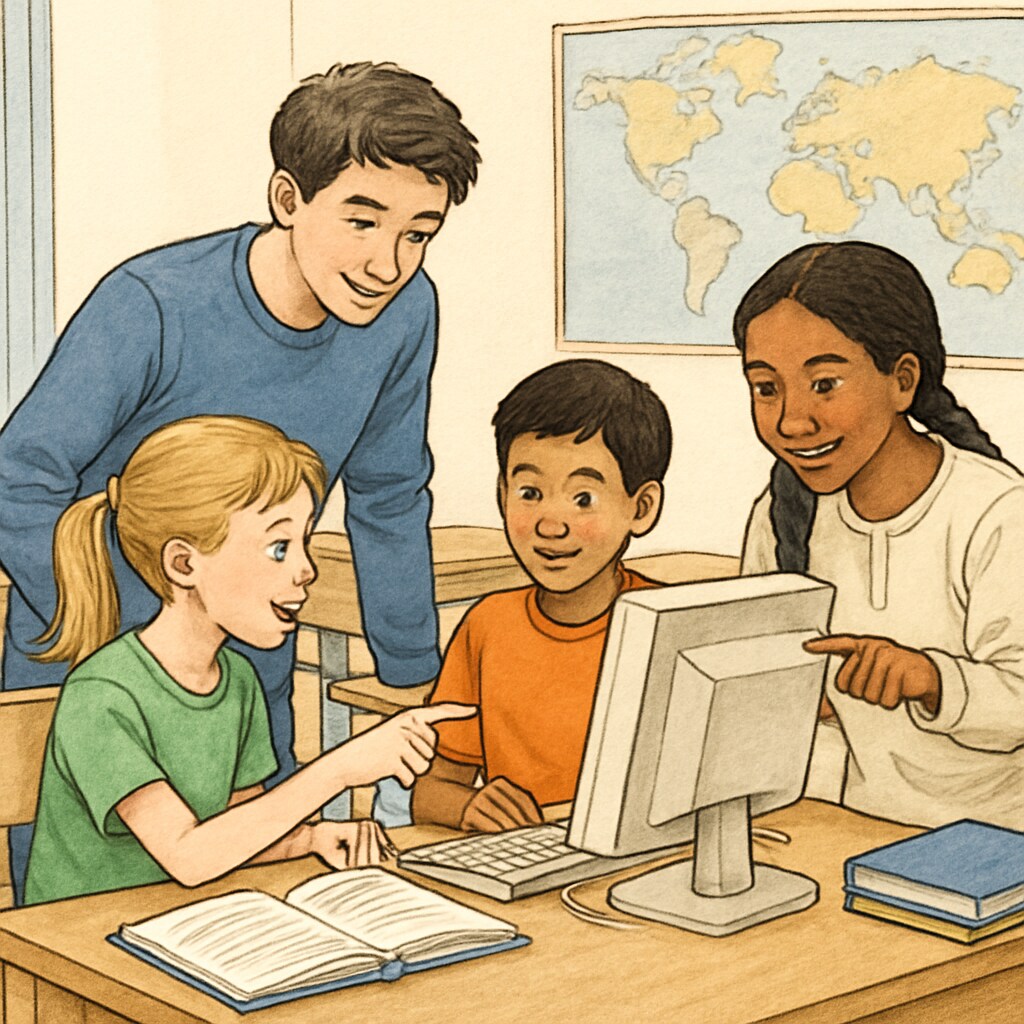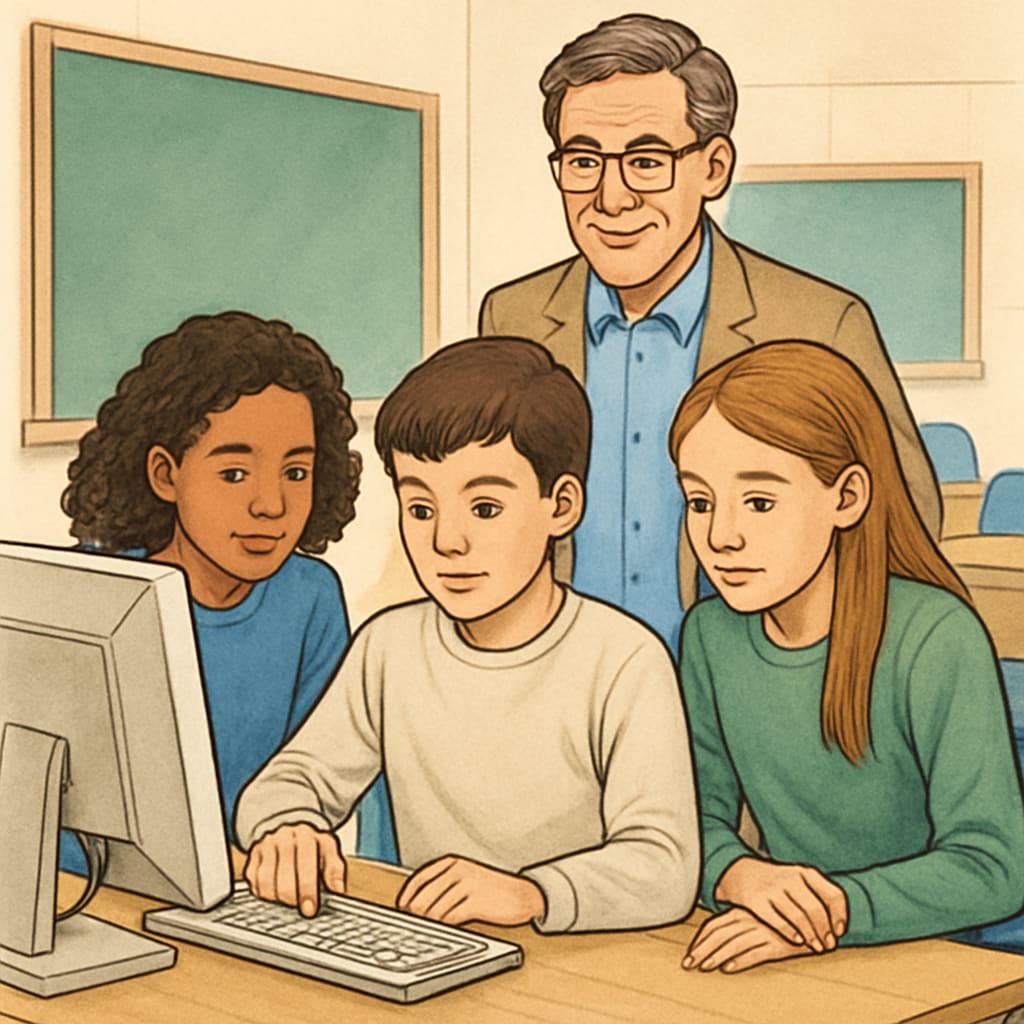Creating opportunities for “kindergarten and fourth-grade partnerships” unlocks the potential for mutual growth and learning. By combining the curiosity and creativity of young learners with the developing maturity and leadership skills of older students, these programs foster a unique and enriching educational experience. Structured activities, such as “computer-based projects,” play a vital role in these partnerships, offering scalable ways to engage both age groups. In this article, we explore the educational value of cross-age collaboration and present eight innovative activity ideas for educators, with a special emphasis on computer-based learning strategies.
The Value of Cross-Age Collaboration
Cross-age partnerships provide an excellent platform for social, emotional, and academic growth. Younger students benefit from role models who can guide and encourage them, while older students develop empathy, patience, and leadership skills. This dynamic mirrors real-world interactions, preparing students for collaborative environments in their future educational and professional journeys.
For example, pairing kindergarteners with fourth graders allows the older students to reinforce their knowledge by teaching concepts, while the younger ones receive guidance in a supportive, one-on-one setting. Incorporating structured activities, particularly “computer-based projects,” adds an extra layer of engagement, as technology can bridge the developmental gap between the two age groups.

Top Eight Activities for Kindergarten and Fourth-Grade Partnerships
Here are eight creative activities designed to nurture the bond between kindergarten and fourth-grade students:
- Interactive Storytelling: Fourth graders can help kindergarteners create and illustrate stories using simple digital tools like storyboarding software.
- Computer Coding Basics: Introduce basic coding platforms, such as ScratchJr, where older students guide younger ones through creative coding exercises.
- Virtual Field Trips: Use virtual reality or online tools to explore places like zoos or museums, with older students explaining the content to their younger partners.
- Shared Drawing Projects: Utilize digital drawing tools for collaborative artwork, allowing both age groups to contribute creatively.
- Math Games: Leverage educational websites that offer interactive math challenges suitable for both age levels, facilitating teamwork in problem-solving.
- Environmental Awareness Projects: Create presentations about topics like recycling, using PowerPoint or Canva, with fourth graders helping their younger peers.
- Keyboarding Practice: Older students can teach basic typing skills through engaging typing games, boosting confidence in technology use.
- Digital Puzzles and Quizzes: Partner students for online puzzle-solving or quiz competitions, encouraging collaboration and critical thinking.
These activities not only enhance learning but also strengthen the interpersonal bond between the two age groups. Structured “computer-based activities” ensure that the collaboration remains focused and productive while fostering digital literacy in both groups.

Implementing Structured Computer Activities
To effectively incorporate computer-based activities into cross-age partnerships, educators must consider the following strategies:
- Choose Age-Appropriate Tools: Select platforms and software that are simple yet engaging for kindergarteners, while offering elements that challenge fourth graders.
- Set Clear Objectives: Define the learning goals for both age groups to ensure that the activity aligns with curriculum standards.
- Provide Training: Offer a brief orientation for fourth graders to familiarize them with their mentoring roles and the technology involved.
- Monitor Progress: Regularly assess the effectiveness of the activities and gather feedback from both students and teachers to make necessary adjustments.
By thoughtfully planning and implementing these strategies, educators can maximize the benefits of “kindergarten and fourth-grade partnerships” while ensuring that “computer-based projects” remain engaging and educational.
Conclusion: Building a Foundation for Lifelong Learning
The magic of cross-age collaboration lies in its ability to bring out the best in both younger and older students. Through carefully designed activities, including structured “computer activities,” educators can create an environment where both groups thrive. The key is to balance fun and learning, ensuring that every interaction contributes to the students’ personal and academic development. As a result, these partnerships not only enrich the classroom experience but also lay the groundwork for lifelong learning and cooperation.
By embracing the potential of “kindergarten and fourth-grade partnerships,” educators are investing in a future where students support and inspire one another, growing together in meaningful ways.
Readability guidance: Short paragraphs and lists have been used to improve readability. Passive voice is minimized, and transitions such as “for example,” “as a result,” and “in addition” appear frequently to enhance flow.


